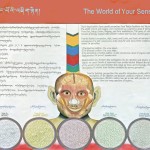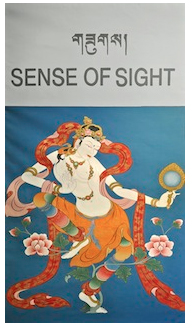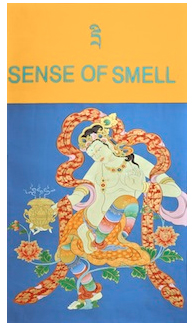Buddhist Perspective

For clear visualization and recognition of any substance by our eye consciousness, there must be three essential conditions- objective condition, dominant condition, and immediately preceding condition. Objective condition includes direct visible objects of eye consciousness, which includes colors and shapes that arise in the aspect of eye consciousness. The dominant condition is the eye sense faculty, which arises when detecting the shapes and colors. The immediately preceding condition refers to the consciousness, which arises prior to the eye consciousness, and this causes the arousal of clear experiences.
During the cultivation of all sense consciousness, there arises simultaneously five concomitant factors, five omnipresent mental factors, and five determining mental factors.
Can we perceive objects without light?
Western Perspective

When light from an object enters the eye and passes through the lens, it creates an image focused on the retina at the back of the eyeball. The retina contains two types of light-sensitive photoreceptor cells: cones and rods. Cone cells are color receptors, and rod cells are mainly used for night vision. Rods are much more numerous; the eye has approximately 100,000,000 rods and 5,000,000 cones. When light contacts the receptor cells, it sends an electro-chemical signal through the optic nerve to a region in the back of the brain. This region, the visual cortex, is specialized for processing visual information, and makes sense of what we see.
We only have three different kinds of color (cone) receptors: red, green, and blue. How do we see other colors, and where does this take place?
 |
| Return to the intro |





